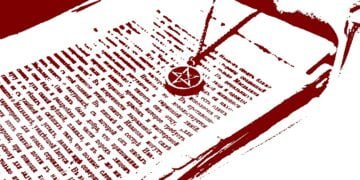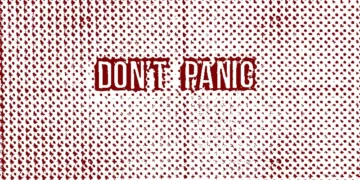A moral panic is essentially an irrational fear surrounding a perceived threat to an existing moral order. Moral panics tend to be located within notions of deviance as moral panics tend to revolve around events which are seen as deviant to the existing moral order. This article looks at the origins of moral panics, the different types of moral panics, and finally some examples of moral panics which have happened over the course of history.
The Origins of Moral Panics
Much of academia tends to attribute the concept of the moral panic to either Jock Young or Stan Cohen. However, in an article by Sutton (2013), the term ‘moral panic’ is traced back to at least 1830 in The Quarterly Christian Spectator Volume 2 (Maltby, 1830: 350). Here it is used as a term which Sutton argues is in the meaning of an abandonment of morality. Sutton then follows up on this with an entry from the Journal of Health in 1832 written by an ‘Association of Physicians’ called ‘Safeguards Against Cholera’. It shows the term ‘moral panic’ being used in its more familiar current day meaning and was described in a quote taken from the French physician Magendie:
“Magendie, a French physician of note, on his visit to Sunderland, where the Cholera was, by the last accounts, still raging, praises the English government for not surrounding the town with a cordon of troops, which as “a physical preventive would have been ineffectual, and would have produced a moral panic far more fatal than the disease now is”” (p. 180).
This implies that at the time there may have been a military response to Cholera which had invoked a moral panic elsewhere; some kind of moral opposition to military personnel being used in dealing with cholera. The English government may then have avoided this avenue. It certainly draws comparisons with the Covid-19 pandemic.
Modern Moral Panics
As mentioned, the moral panics that academia are more familiar with are those of Stan Cohen. Stan Cohen formulated his ideas through media reports of clashes between mods and rockers. Mods and rockers were two subcultures that were known for having rival clashes during the 1960’s. Mod culture was symbolised by ska, modern jazz, wearing suits, and riding scooters. Rockers by opposition were into the rock and roll music of the time, riding motorcycles, and sported leather jackets.
Cohen (1972) argued that societies are vulnerable to sporadic events of moral panic. He describes the moral panic as:
A condition, episode, person or group of persons emerges to become defined as a threat to societal values and interests; its nature is presented in a stylized and stereotypical fashion by the mass media; the moral barricades are manned by editors, bishops, politicians and other right-thinking people; socially accredited experts pronounce their diagnoses and solutions; ways of coping are evolved or (more often) resorted to; the condition then disappears, submerges or deteriorates and becomes more visible.
Sometimes the object of the panic is quite novel and at other times it is something which has been in existence long enough, but suddenly appears in the limelight. Sometimes the panic passes over and is forgotten, except in folklore and collective memory; at other times it has more serious and long-lasting repercussions and might produce such changes as those in legal and social policy or even in the way the society conceives itself.
He observed that often these moral panics revolved around youth cultures which in this case is the mods and rockers. However, he also gives examples of the Teddy Boys, Hells Angels, skinheads, and hippies.
Amplification Spiral
One of the central elements of a moral panic is its amplification in the media. As the term ‘amplification spiral’ suggests, the issue is amplified, made louder, by the media to the point at which it begins to spiral through society. Cohen addressed the way in which media do actually amplify a given problem and referred to ‘deviancy amplification’ noting how some panics tend to ‘spiral’. He never actually used the term ‘amplification spiral’ but that is now how we refer to the phenomena.
Thompson (2013: 395) uses the example of the ‘mosque at ground zero’ to demonstrate the amplification spiral. Ground zero refers to the area where the World Trade Centre once stood in lower Manhattan, New York before the events of 9/11. A localised issue surrounding the building of a Muslim community centre near to the site was picked up and turned into a campaign by right-wing conservative bloggers. Despite the fact that the proposed site for the centre was already in use as a Muslim site of worship, the story became amplified in the media who drew upon pre-existing traumas from the events of 9/11 ultimately spreading anti-muslim fears. This, in turn, manifested in other states beyond New York.
Types of Moral Panic
Beyond Stan Cohen, academics have sought to expand upon Cohens works. Perhaps the most prominent of these is Goode & Ben-Yehuda (2009). In their book ‘Moral Panics: The Social Construction of Deviance’, they outline what they see as three different models of moral panic: grassroots model, interest group theory, and elite-engineered model.
Grassroots Model: in this model, moral panic originates from the general public who perceive some kind of issue emerging from society that represents a threat to their values. The media and politicians, rather than creating the panic, become aware of the existing panic from the general public and begin to amplify it. This, of course, returns us to Cohen’s amplification spiral.
Elite-Engineered Model: this model argues that the origins of a moral panic are created or orchestrated by the ruling elite. The intent is, of course, to induce panic or even fear of a perceived threat to the moral order. This issue is amplified in the media so as to be disproportionate to the actual reality of the problem. It is used as a way of distracting the public from more serious issues present which, to provide solutions for, would threaten the power of the ruling elite. An example of this is how the UK Conservative party stirred up hatred of benefit claimants after the financial crash of 2008 to manufacture support for austerity rather than experience any significant losses themselves.
Interest Group Theory: somewhere between the other two models is the interest group theory which argues that moral panic tends to manifest from more middle (or meso) level power interests. Groups of professionals, religions, and institutions may play a role is flexing their own investment in the panic. They may be able to influence media coverage of the issue or even political forces. The combination of various interest groups may help to propel the panic to the forefront of media coverage.
Looking at these different models shows that there is an inherent social stratification to them. Stratification manifests here seemingly through the distribution of power. However, stratification can also manifest depending on the target of the panic (see below in examples).
Elements of Moral Panics
Staying with Goode & Ben-Yehuda (2009), they further argue that there are five constituent elements to defining a moral panic.
Concern: a visible level of concern over a particular issue should become apparent. Concerns about societal consequences of a given issue or group become a real fear which can be measured through opinion polls or become part of national conversation
Hostility: raised hostilities towards the group or issue perceived to be the threat to the existing moral order. Hostility also includes designating responsibility for the issue to a certain group with the consequences possibly manifesting within ‘us vs. them’ narratives. Groups then become the enemy and can be subject to ‘othering’ or stereotyping.
Consensus: reasonably widespread support for the threat to the moral order as being real. Although this does not have to be universal, it still requires a significant agreement between people that there is indeed a threat to the moral order. Here, they argue that moral panics occur in various sizes and that there is no exact, arbitrary point at which a moral panic becomes its namesake. Moral panics thus can occur within a single group or a single community in a kind of localised issue.
Disproportion: a sense of disproportionality to the issue exists. Claims as to the severity or size of the issue do not relate to the actual reality of the issue and can be over-exaggerated. Perhaps the classic Daily Mail ‘invasion’ by migrants is a good example of disproportionality.
Volatility: moral panics can become apparent very quickly and subside just as easily. Sometimes, moral panics become institutionalised through new laws and practices and sometimes moral panics come and go without any major change to the moral order. Therefore, there is an inherent uncertainness to them which reflects the meaning of panic. It can be a ‘flash in the pan’ so to speak.
Examples of Moral Panic
There are various examples of moral panics which have occurred throughout history and up to the present time. It is important to remember that often these events were not considered moral panics at the time, particularly if they occurred before Stan Cohens theory. Many events prior to Cohen then would now have been categorised as moral panics retrospectively which could be seen as a form of historical revisionism. This is not necessarily a bad thing as when we come to have new ways of thinking and interpreting, it often essential for historical events to be re-evaluated in the light of this new knowledge.
Some examples of moral panics prior to Cohen have been highlighted by Goode & Ben-Yehuda (2009) who suggest that the 19th century Canudos massacre in Brazil constituted a moral panic as too did the sexual psychopath laws of the 1930’s to 1950’s. Others examples may also include the witchcraft trials of the 1600’s (Brown, 2018).
Post-Cohen, examples become much more forthcoming. The satanic panic of the 1980’s is perhaps the defining example but others include the ‘red scare’ which surrounded the idea of dangerous communists. More recent examples include the paedophile panic of the 2000’s, dangerous dogs which also seems to be having a current resurgence, terrorism, and immigration.
References
Association of Physicians (1832). The Journal of Health. 12th ed. [online] Internet Archive, Open Court Publishing Co. Available at: https://archive.org/details/sim_journal-of-health-conducted-by-association-of-physicians_1832-02-22_3_12/.
Brown, M. (2018). The Salem witch trials: Dehumanizing the different. The Histories, 15(1), 10.
Cohen S. (1972). Folk devils and moral panics: the creation of the mods and rockers. MacGibbon and Kee.
Goode, E. and Ben-Yehuda, N. (2009). Moral panics: the social construction of deviance. Chichester, U.K. ; Malden, Ma: Wiley-Blackwell.
Maltby, A.H. (1830). The Quarterly Christian Spectator. New York: Baldwin & Treadway.
Sutton, M. (2013). The British Moral Panic Creation Myth is Bust. [online] Dysology. Available at: https://dysology.blogspot.com/2017/12/the-british-moral-panic-creation-myth.html [Accessed 1 Apr. 2023].
Thompson, K. (2013). Cultural trauma and moral panic: 9/11 and the mosque at ground zero affair. The Ashgate research companion to moral panics, 386-400.












